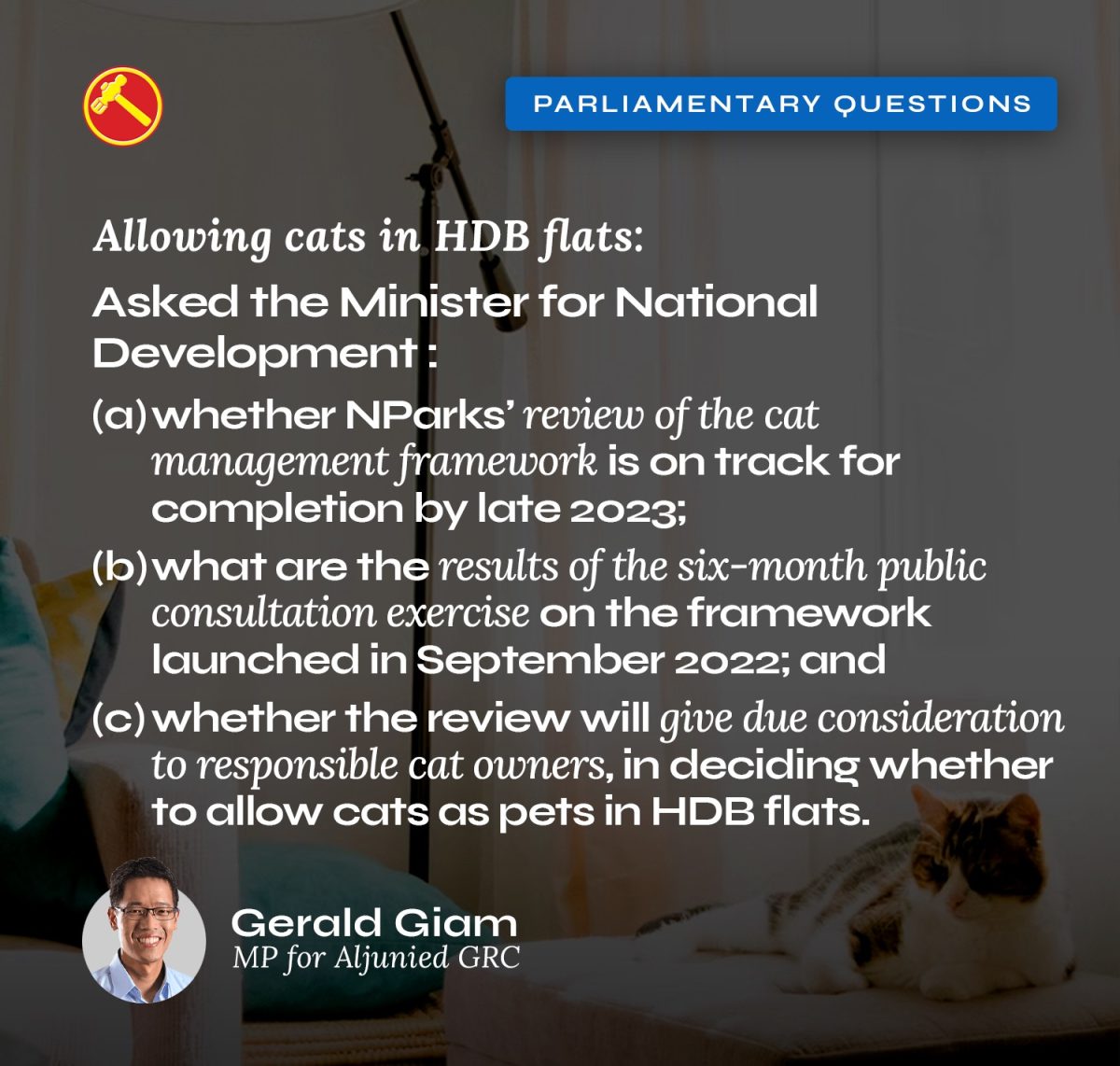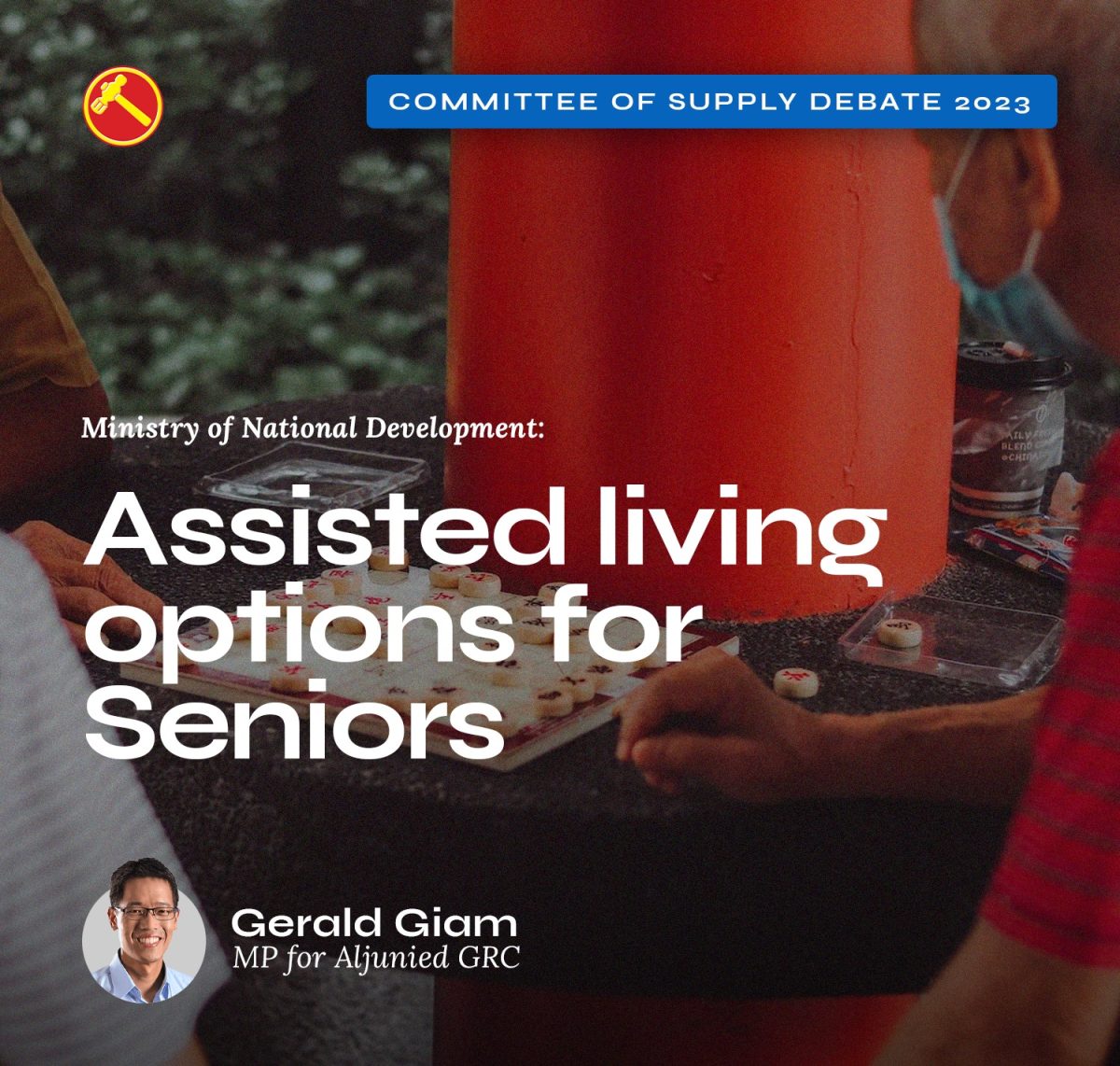Next year, Japan will start releasing treated radioactive water from its damaged Fukushima nuclear power plant into the Pacific Ocean. Many people in the Asia-Pacific region, including in Singapore, are concerned about this move’s radiological impact on people and the environment. On 3 Aug 2023, I asked Minister for Sustainability and the Environment Grace Fu if the Government is monitoring the water around the areas (in the Pacific Ocean) where our sources of seafood come from to assess whether or not the release of the wastewater will impact Singapore.
The Minister said that the Government will monitor reports coming from those areas but because Singapore does not have jurisdiction in those areas, it would be “very unrealistic to expect NEA to be monitoring the quality of waters several thousand miles away from Singapore”. She said, however, that the Government assesses the plan put up by the Japanese authorities on how they intend to discharge the wastewater and takes guidance from IAEA (the International Atomic Energy Agency). She also said that the Singapore authorities “take food samples” to manage the risks.
This is the full exchange in Parliament:
Ms Joan Pereira asked the Minister for Sustainability and the Environment with regard to the release of treated wastewater from the Fukushima nuclear plant into the Sea by Japan (a) what measures are in place to ensure the safety of our food products, especially seafood, imported from Japan; and (b) whether the Ministry has assessed the potential impact on Singapore’s surrounding waters.
Mr Melvin Yong Yik Chye asked the Minister for Sustainability and the Environment with regard to the impending release of treated radioactive water from the Fukushima Daiichi nuclear plant into the ocean (a) whether the Singapore Food Agency (SFA) will review the safety of seafood imports from Japan; and (b) what actions will SFA take when an imported food is found to have elevated levels of tritium or other radionuclide levels.
The Minister for Sustainability and the Environment (Ms Grace Fu Hai Yien): Mr Speaker, may I have your permission to answer Question Nos 8 and 9 together in the Order Paper today, because they relate to the same matter?
Mr Speaker: Please proceed.
Ms Grace Fu Hai Yien: Thank you very much. The Singapore Food Agency (SFA) and the National Environment Agency (NEA) adopt a science-based approach towards assessing food safety risks and environmental impacts respectively.
To ensure food safety, food imported into Singapore is subjected to SFA’s surveillance and monitoring regime, which includes radiation surveillance. Food products that fail SFA’s inspections and tests will not be allowed for sale. SFA has been closely monitoring food imports, including those from Japan, and our surveillance results have been satisfactory. SFA also keeps abreast of international developments and expert reports from the International Atomic Energy Agency (IAEA) and foreign food safety authorities to augment our surveillance and monitoring regime.
NEA assesses that Japan’s planned discharge of treated radioactive water from the Fukushima nuclear plant into the sea is unlikely to impact the seawater quality in or around Singapore waters. Since 2019, NEA has been closely monitoring Singapore’s waters as part of NEA’s environmental baseline radiation monitoring programme. The radioactivity measured continues to remain within our natural background levels. SFA and NEA will continue to monitor closely radiation levels in our food imports and our environment respectively.
Mr Speaker: Ms Joan Pereira.
Ms Joan Pereira (Tanjong Pagar): Mr Speaker, I have three supplementary questions for the Minister. I note that NEA operates a network of about 40 ambient radiation monitoring stations in and around Singapore, which provide a daily update on radiation levels. First, may I ask if the Ministry of Sustainability and Environment (MSE) has any plans to increase the frequency of monitoring to more than once a day or to include more monitoring stations?
The second question is a request for the readings to be made known to the public; and third, does MSE have any processes presently to monitor the presence of tritium in our environment?
Ms Grace Fu Hai Yien: Mr Speaker, sorry, I could not catch hold of the Member’s second and third points – made known to the public on what?
Ms Joan Pereira: Make known to public on the radiation levels.
Ms Grace Fu Hai Yien: Yes, okay. And the third?
Ms Joan Pereira: Any process presently to monitor the presence of tritium in our environment.
Ms Grace Fu Hai Yien: I thank the Member for the questions. I would like to assure Members here as well as members of the public that we do keep a close watch, as I have mentioned earlier, including the readings from the 40 monitors that Member Joan Pereira has mentioned. And we do include readings on radiation and, if necessary, we will make some of these known if we need the public to be aware. Because these monitors actually collect a lot of data, so, we do not think that it is necessary to highlight one of them, unless it is in the public interest to do so.
And we have in the past, for example, when it comes to haze, we do highlight certain readings when we think that it is necessary for the public to take action. Otherwise, there will be a lot of data that may inundate the public and actually may not have the desired impact.
Having said that, we will monitor closely. For some indicators, we do intend to increase the number of monitors, but I will just assure the Member that we will look into the overall requirements of environmental protection and assess our capability from time to time.
Mr Speaker: Mr Melvin Yong.
Mr Melvin Yong Yik Chye (Radin Mas): Sir, I thank the Minister for her reply. My supplementary questions relate to food products. First, I would like to ask if SFA tests all imported food products coming from high-risk locations where there are potential nuclear contamination issues. Second, what would be the recourse for consumers who suspect that they have bought or consumed a product that contains high radionucleic levels?
Ms Grace Fu Hai Yien: Thank you very much, Mr Melvin Yong, for the question. We take a risk-based approach when it comes to food safety and these risks could be many different types of risks. It can be from nuclear activities, nuclear active materials, it can be contamination from the environment. We are inundated actually with many, many different types of risks. So, I would not want Members to go away thinking that nuclear contamination is the only thing that we are concerned with or this is an issue that we are concerned about right now. As I have mentioned earlier in my reply, we have actually been monitoring a whole host of risks and you can see that SFA, from time to time, does take action against food items that do not meet our requirements.
So, this regime will continue and, of course, we will watch the situation with the discharge of Fukushima wastewater carefully. We will also rely on international assessments and we do exchange data and intelligence with other food safety authorities.
Mr Speaker: Mr Gerald Giam.
Mr Gerald Giam Yean Song (Aljunied): I thank the Minister for her replies. I note the Minister said that the discharge of wastewater is unlikely to impact the waters around Singapore. But can I ask the Minister if NEA or SFA is monitoring whether the water around the areas where our sources of seafood come from is being monitored to assess whether or not it will impact Singapore?
Ms Grace Fu Hai Yien: Of course, we will monitor reports coming from those areas. As you see, we do not have jurisdiction in those areas. So, it is really not very realistic for us to expect NEA to be monitoring the quality of waters several thousand miles away from Singapore. Having said that, we do assess the plan that has been put up by the Japanese authorities on how they intend to discharge the wastewater. We do watch what IAEA is doing because IAEA is obviously monitoring the discharge and also on the lab reports very closely.
More importantly is that we do take food samples to manage the risks. So, I can assure the Member as well members of the public that this item is on our agenda and we will be taking all necessary actions to keep food coming into Singapore safe.
Source: Singapore Parliament Reports (Hansard)
Photo by Tamas Pap on Unsplash






